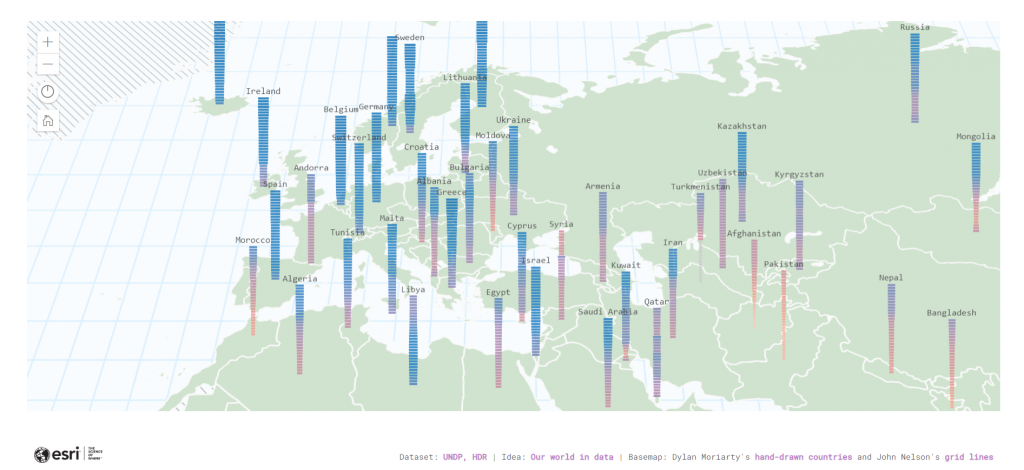UN data is presented on an interactive Esri GIS map.
Students from almost every corner of the planet are devoting between 4 and 8 years more to their education than in 1990, an interactive map shows.
The global map with interactive charts is based on data from the United Nations Development Program (UNDP). It was created with the latest GIS technologies on the ArcGIS platform.
Inequality in children’s access to education in some parts of the world is easily highlighted, and at a glance, one can get an idea of the trends in different countries for the period 1990-2021.
The latest data shows that Australia is the country with the longest schooling – the number of years exceeds 21 in 2021, but there have also been periods where students have been educated for more than 23 summers.
The data for Bulgaria for the presented period show that we have a nearly two-year increase in the number of years of schooling per child, as in the 1990s they were 12, and in 2021 – 13.9. In 2014, the expected years that a Bulgarian child will spend in school were 15, after which there is a slight decrease in the duration of school education in our country.

Globally, in 1990 the country with the lowest number of expected years of schooling per child was Niger with approximately 2 years of schooling. By 2021, the number of expected years in school there has risen to 7
Exceptions are countries that are at war or torn by internal conflicts. For example, in Syria, there has been a decline of almost 4 years according to the commented indicator since 2013.
###